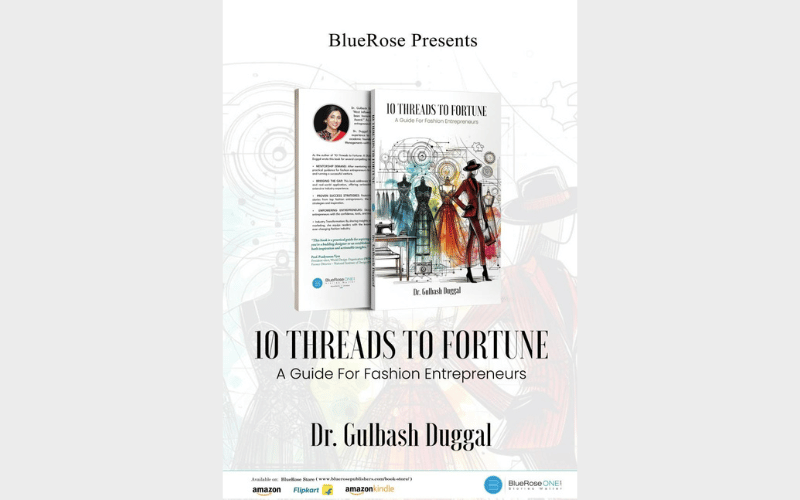
Design Thinking in Fashion Designing: Approaches and Applications
Fashion design is a rapidly growing industry, and with the ever-increasing competition, fashion designers need to be innovative and creative to stay ahead. Design thinking has emerged as a new approach to fashion design, offering a fresh perspective and allowing designers to create products that meet the needs of their clients in a sustainable and user-centred manner. In this article, we will explore the approaches and applications of design thinking in fashion design, using examples from leading fashion designers.
What is design thinking?
Design thinking is a human-centred approach to problem-solving that emphasizes empathy, collaboration, experimentation, and iteration. It is a creative and iterative process that involves a deep understanding of the needs of the end users and the ability to generate ideas that meet those needs. Design thinking is not limited to any particular field or industry and can be applied to any problem that requires a solution. The critical elements of design thinking include:
- Empathy: Understanding the needs and perspectives of the end-users.
- Collaboration: Working together with a diverse group of people to generate ideas.
- Experimentation: Trying out different ideas and solutions to test their effectiveness.
- Iteration: Continuously refining and improving solutions based on feedback.
Design thinking in fashion design:
The traditional approach to fashion design has focused on creating aesthetically pleasing, trendy, and marketable products. However, with the increasing awareness of sustainability and the need to develop products that meet the needs of a diverse range of consumers, fashion designers are turning to design thinking. The design thinking approach emphasizes collaboration with end-users and stakeholders to create products that meet their needs while considering the environmental impact.
Examples of design thinking in fashion design:
- Collaborative design: One example of design thinking in fashion design is collaborative innovation. The combined method involves working with diverse people to create products that meet their needs, including end-users, stakeholders, and experts. Collaborative design can help fashion designers create innovative, functional, sustainable products.
- Sustainable fashion: Another example of design thinking in fashion design is sustainable fashion. Sustainable fashion involves creating products that are environmentally friendly and socially responsible. Sustainable fashion can include using eco-friendly materials, ethical manufacturing processes, and reducing waste.
- User-centred design: User-centered design is another approach to fashion design that focuses on the needs of the end-users. User-centred design involves understanding the needs and preferences of the end-users and creating products that meet those needs. User-centred design can help fashion designers create more comfortable, functional, and appealing products for diverse consumers.
- Innovative materials and technology: Another approach to fashion design is using innovative materials and technology. Fashion designers use new materials and technology to create innovative, functional, and sustainable products. For example, designers use 3D printing technology to create unique and intricate designs that were previously impossible.
Applications of design thinking in fashion design:
Design thinking can be applied to all aspects of fashion design, from the ideation phase to the manufacturing process. The role of design thinking in the fashion industry includes:
- Understanding the needs of the end-users: Design thinking can help fashion designers to understand the needs and preferences of the end-users and create products that meet those needs.
- Collaborative design: Design thinking can help fashion designers to collaborate with end-users, stakeholders, and experts to create products that are innovative, functional, and sustainable.
- Sustainable fashion: Design thinking can help designers create environmentally friendly and socially responsible products.
- Innovative materials and technology: Design thinking can help fashion designers use new materials and technology to create innovative, functional, and sustainable products.
Case studies:
Stella McCartney
Stella McCartney is a fashion designer known for her commitment to sustainability and using innovative materials. McCartney’s design thinking approach uses sustainable materials like organic cotton and recycled polyester and innovative materials like vegan leather made from mushrooms. McCartney’s designs are user-centred and focus on creating functional, comfortable, and stylish products that meet the needs of her clients.
Nike
Nike is a leading sports brand using design thinking to create innovative and functional sports apparel and footwear. Nike’s design thinking approach includes collaborating with athletes and end-users to develop products that meet their needs. Nike has also used innovative materials like 3D printing and Flywire technology to create lightweight, durable, and functional products.
Levi’s
Levi’s is a denim brand using design thinking to create sustainable and user-centred products. Levi’s design thinking approach includes using eco-friendly materials like organic cotton and recycled denim and collaborating with end-users to develop products that meet their needs. Levi’s has also been using innovative materials and technology like Water<Less technology to reduce water usage in manufacturing.
Conclusion:
Design thinking has emerged as a novel approach to fashion design, offering a unique perspective that enables designers to create sustainable and user-centered products that meet the needs of their clients. This methodology can be applied to all facets of fashion design, ranging from the ideation phase to the manufacturing process. Collaborative design, user-centered design, sustainable fashion, and innovative materials and technology are among the approaches to design thinking in fashion design.
Aspiring fashion designers can also benefit from incorporating design thinking into their design process to create products that are not only aesthetically pleasing but also sustainable and functional.
The Institute of Creative Fashion (ICF) offers courses that can help you develop your skills and knowledge in fashion design.



